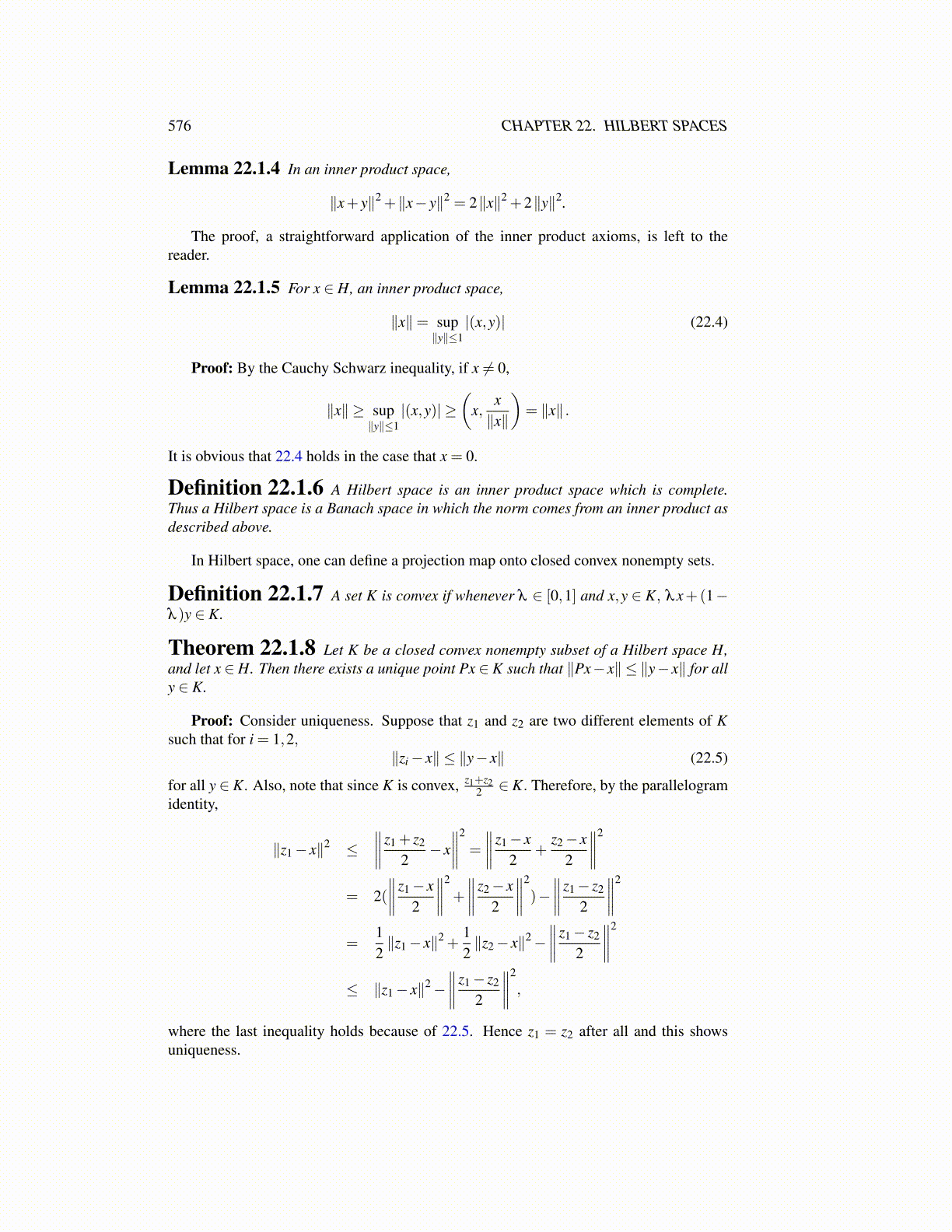
576 CHAPTER 22. HILBERT SPACES
Lemma 22.1.4 In an inner product space,
∥x+ y∥2 +∥x− y∥2 = 2∥x∥2 +2∥y∥2.
The proof, a straightforward application of the inner product axioms, is left to thereader.
Lemma 22.1.5 For x ∈ H, an inner product space,
∥x∥= sup∥y∥≤1
|(x,y)| (22.4)
Proof: By the Cauchy Schwarz inequality, if x ̸= 0,
∥x∥ ≥ sup∥y∥≤1
|(x,y)| ≥(
x,x∥x∥
)= ∥x∥ .
It is obvious that 22.4 holds in the case that x = 0.
Definition 22.1.6 A Hilbert space is an inner product space which is complete.Thus a Hilbert space is a Banach space in which the norm comes from an inner product asdescribed above.
In Hilbert space, one can define a projection map onto closed convex nonempty sets.
Definition 22.1.7 A set K is convex if whenever λ ∈ [0,1] and x,y ∈ K, λx+(1−λ )y ∈ K.
Theorem 22.1.8 Let K be a closed convex nonempty subset of a Hilbert space H,and let x ∈H. Then there exists a unique point Px ∈ K such that ∥Px− x∥ ≤ ∥y− x∥ for ally ∈ K.
Proof: Consider uniqueness. Suppose that z1 and z2 are two different elements of Ksuch that for i = 1,2,
∥zi− x∥ ≤ ∥y− x∥ (22.5)
for all y ∈ K. Also, note that since K is convex, z1+z22 ∈ K. Therefore, by the parallelogram
identity,
∥z1− x∥2 ≤∥∥∥∥ z1 + z2
2− x∥∥∥∥2
=
∥∥∥∥ z1− x2
+z2− x
2
∥∥∥∥2
= 2(∥∥∥∥ z1− x
2
∥∥∥∥2
+
∥∥∥∥ z2− x2
∥∥∥∥2
)−∥∥∥∥ z1− z2
2
∥∥∥∥2
=12∥z1− x∥2 +
12∥z2− x∥2−
∥∥∥∥ z1− z2
2
∥∥∥∥2
≤ ∥z1− x∥2−∥∥∥∥ z1− z2
2
∥∥∥∥2
,
where the last inequality holds because of 22.5. Hence z1 = z2 after all and this showsuniqueness.